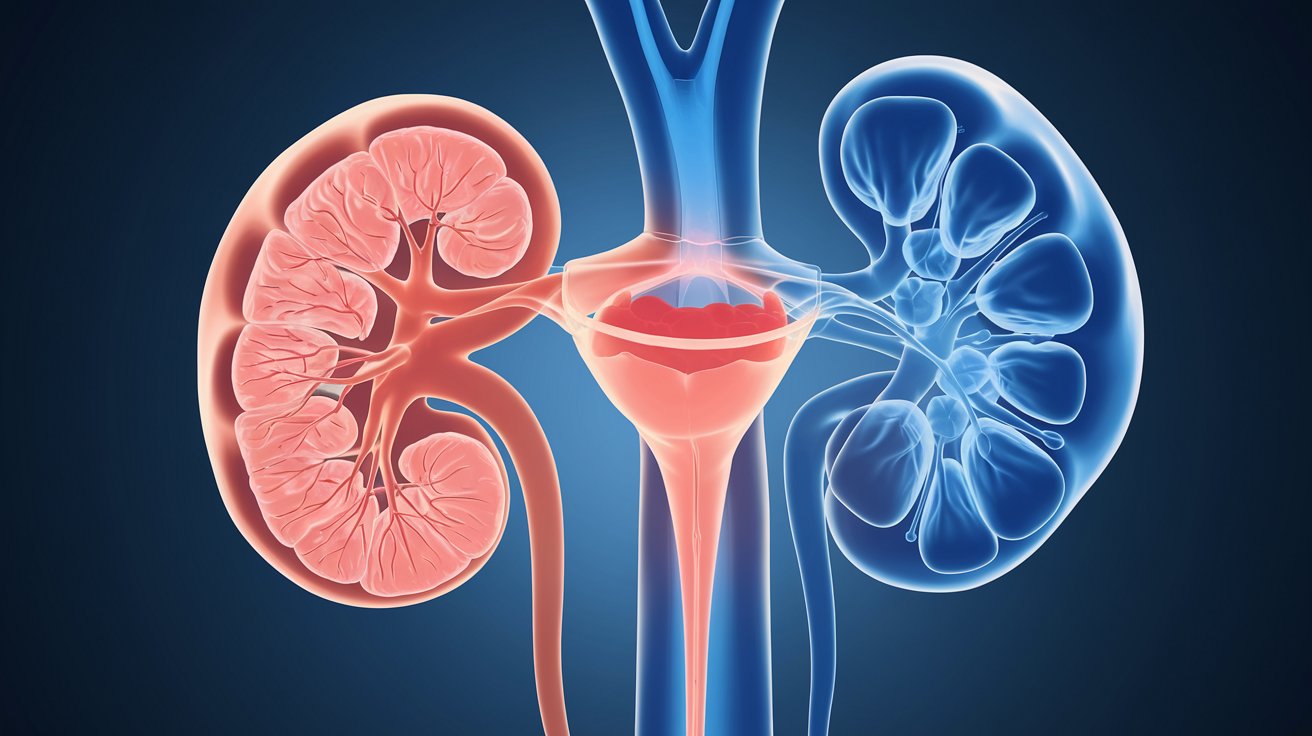
Did you know the ureter and renal pelvis play crucial roles in your body's plumbing system? These two components are vital for transporting urine from the kidneys to the bladder. The ureter, a muscular tube, measures about 10 to 12 inches long and connects each kidney to the bladder. Meanwhile, the renal pelvis acts as a funnel, collecting urine from the kidney's nephrons before it travels down the ureter. Together, they ensure waste is efficiently removed from the body. Understanding these structures can help you appreciate how your body maintains balance and health. From their unique anatomy to their essential functions, the ureter and renal pelvis are more than just parts of the urinary system—they're key players in keeping you healthy. Curious about how they work or what happens when things go wrong? Dive into these fascinating facts and uncover the secrets of your body's internal plumbing!
Key Takeaways:
- The ureter and renal pelvis are like the body's plumbing system, transporting urine and preventing backflow. They also adapt to changes and play a crucial role in maintaining our health.
- Understanding the ureter and renal pelvis helps us recognize potential issues like kidney stones and infections, and the importance of hydration and balanced diet for their health.
Understanding the Ureter and Renal Pelvis
The ureter and renal pelvis are crucial parts of the urinary system. They play a vital role in transporting urine from the kidneys to the bladder. Let's explore some fascinating facts about these essential structures.
-
The ureter is a muscular tube that connects the kidney to the bladder. It measures about 10 to 12 inches long in adults.
-
Each person has two ureters, one for each kidney. They work tirelessly to ensure urine flows smoothly.
-
The renal pelvis is a funnel-shaped structure located at the top of the ureter. It collects urine produced by the kidney.
-
The ureter has three layers: an inner mucosal layer, a muscular layer, and an outer fibrous layer. These layers help in the contraction and relaxation needed to move urine.
-
The ureter's muscular layer is responsible for peristalsis, a wave-like motion that pushes urine toward the bladder.
-
The renal pelvis is part of the kidney's collecting system, which includes the calyces and the ureter.
-
The ureter enters the bladder at an angle, creating a one-way valve that prevents urine from flowing back into the kidneys.
-
The ureter's diameter is about 3 to 4 millimeters, but it can stretch to accommodate larger volumes of urine.
-
The renal pelvis can vary in size and shape among individuals, affecting how urine is collected and transported.
-
The ureter's lining is made of transitional epithelium, which can stretch and contract as needed.
Functions and Importance
The ureter and renal pelvis are not just passive tubes; they have specific functions that are vital for maintaining the body's fluid balance.
-
The ureter's primary function is to transport urine from the kidneys to the bladder, ensuring waste is efficiently removed from the body.
-
The renal pelvis acts as a reservoir, collecting urine before it moves into the ureter.
-
The ureter's peristaltic movements are crucial for preventing urine backflow, which can lead to infections or kidney damage.
-
The renal pelvis plays a role in regulating urine flow, ensuring it is released in a controlled manner.
-
The ureter's structure allows it to handle varying urine volumes without damage or leakage.
-
The renal pelvis can adapt to changes in urine production, expanding or contracting as needed.
-
The ureter's ability to stretch helps prevent blockages that could lead to kidney stones or other complications.
Health and Medical Considerations
Understanding the health aspects of the ureter and renal pelvis can help in recognizing and addressing potential issues.
-
Ureteral stones, also known as kidney stones, can block urine flow and cause severe pain.
-
Infections in the ureter or renal pelvis can lead to conditions like pyelonephritis, a type of kidney infection.
-
Ureteral strictures, or narrowing, can occur due to injury or inflammation, affecting urine flow.
-
The renal pelvis can become dilated, a condition known as hydronephrosis, often caused by blockages.
-
Ureteral stents may be used to keep the ureter open and ensure urine flow in cases of obstruction.
-
Regular hydration and a balanced diet can help maintain the health of the ureter and renal pelvis.
-
Imaging tests like ultrasounds or CT scans are often used to diagnose issues related to the ureter and renal pelvis.
-
Surgical procedures may be necessary to address severe blockages or structural abnormalities in the ureter or renal pelvis.
Final Thoughts on Ureter and Renal Pelvis
Understanding the ureter and renal pelvis is crucial for grasping how our bodies manage waste. These structures play a vital role in transporting urine from the kidneys to the bladder, ensuring our bodies efficiently eliminate toxins. The ureter is a muscular tube that contracts rhythmically to push urine downward, while the renal pelvis acts as a funnel collecting urine from the kidney. Any issues here, like kidney stones or infections, can cause significant discomfort and health problems. Knowing these facts helps us appreciate the complexity and importance of our urinary system. Regular check-ups and staying hydrated can keep these parts functioning well. So, next time you drink water, remember you're helping your ureters and renal pelvis do their job. Keep learning and stay curious about how your body works!
Frequently Asked Questions
Was this page helpful?
Our commitment to delivering trustworthy and engaging content is at the heart of what we do. Each fact on our site is contributed by real users like you, bringing a wealth of diverse insights and information. To ensure the highest standards of accuracy and reliability, our dedicated editors meticulously review each submission. This process guarantees that the facts we share are not only fascinating but also credible. Trust in our commitment to quality and authenticity as you explore and learn with us.
